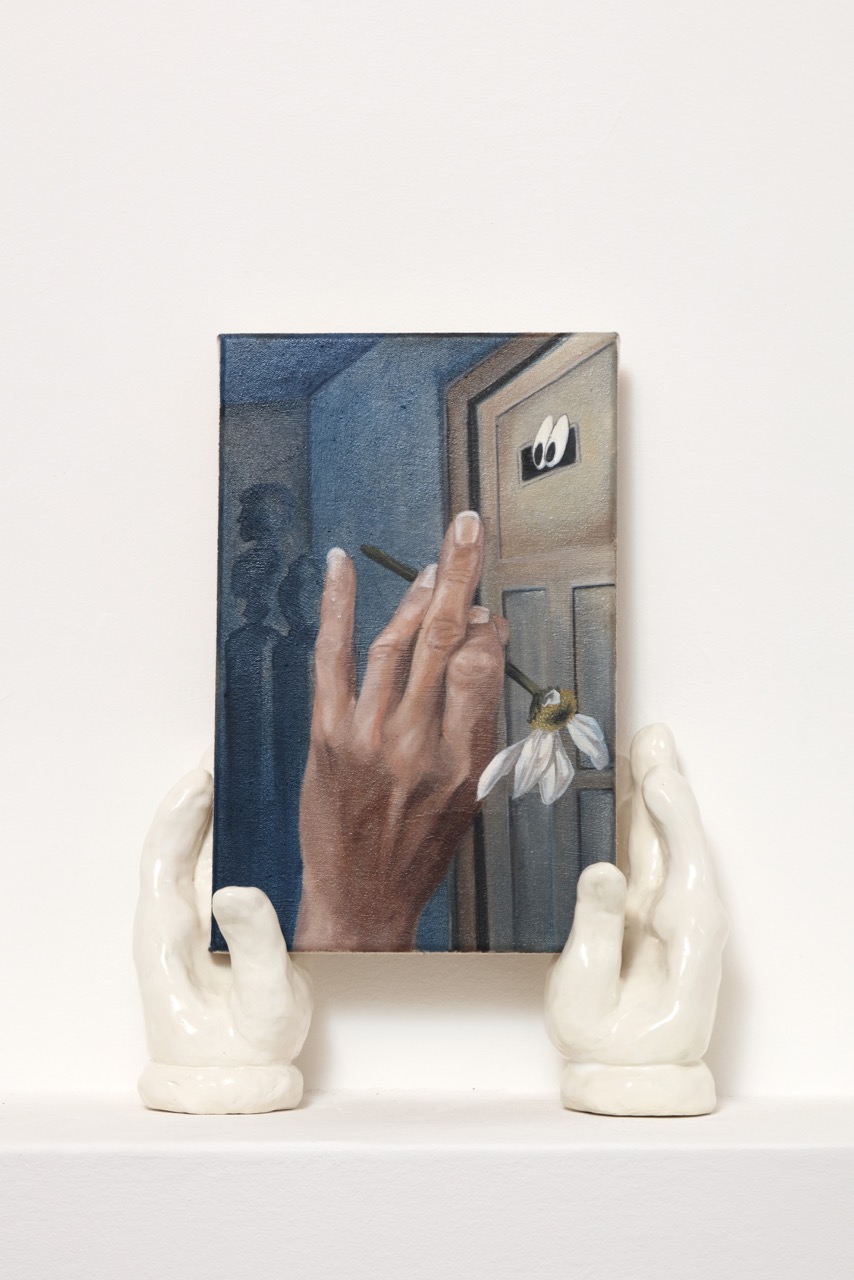Stephanie Hier

Mostra personale di Stephanie Hier dal titolo: Be true to your teeth and they won’t be false to you.
Comunicato stampa
NEOCHROME is pleased to present Be true to your teeth and they won’t be false to you, the first European solo show by Stephanie Hier.
DRAW YOUR OWN HANDS (SIMPLIFIED) FROM A MIRROR. THIS WAY THEY APPEAR AS THEY DO IN A DRAWING.
- Preston Blair, Cartoon Animation, 1994
The pioneering use of the multiplane camera was key to Disney’s singular reign over animated films. By shooting through as many as seven separate layers of art— oil on glass, with various levels of transparency— they created a heightened sense of dimensionality in which 2-D characters could more readily exist in 3-D space. The 1937 Silly Symphony short, The Old Mill, was an initial test by Disney for this new technology; it depicted a rich, pastoral landscape in which the cutest of birds, frogs, and bats live harmoniously (literally) in and around an abandoned mill until threatened by a violent storm in the middle of the night. The combination of lucid depth perception in the highly detailed backgrounds with the far more simply rendered eyes of the panicked animals effectively draws out a sympathetic reaction from viewers; their temporary peril feels in and of our world. By the final scene where the peaceful routines of the animals have returned, and the camera draws back to reveal a glistening spider web set in front of a distant shot of the mill, you’ve gone through the emotional ringer. The entire film is just over eight minutes long.
The oft-cited duration of how long an average viewer looks at a painting is 15-30 seconds, but the Internet says it’s been reduced to 2-3 seconds (which, from my position as a curator in New York, seems about right). What compels people to look for an extra 10 seconds? I suppose it’s something the images contained within, how familiar they are. Classical figurative painting, which Stephanie Hier deals with so cannily in her work, intends to act as a window onto another world; the more beautiful or strange that world is allows viewers a momentary escape hatch. And the more hyper-realistic that world is, the viewer will spend time attempting to find where the construction of the image reveals itself, i.e. “the hand” of the artist. This hand has always occupied a privileged position in art history, even in the post-modern era of fabrication and outsourcing.
It’s redundant to say that Hier’s hands are all over her exhibition. After all, she is the artist, she made the work, and her name is on the wall. But there are hands and there is hand-liness. As celebrated animator Preston Blair, whose final step for drawing hands is cited at the top of this text, suggests: basing your illustration on reality makes it more real. This seems quite obvious. But how is it the misshapen, four-fingered hand that has been cut-out (or broken through) the ceramic frame in Jaywalk or Jim, I wore a tie today, is just as readily recognized as our own? This handprint frames yet another layer of representational imagery—the flora and fauna of mass-produced temporary tattoos. Hier repositions these delicate, readymade images into permanent compositions, subbing in a field of stretched linen for flawed skin. We may judge the appearance of a pink butterfly on a human body, but would never do so on the wall.
We question the hands on the reclining sixteenth-note in Looks like a poached egg as little as we question the fully shaded and contoured human hands holding a pen above it; forget that it has eyeballs and accessories. When the white gloved hands which gingerly hold up the painting in Roll up that map enter into our shared third dimension, they equally reference the animation trope which allowed us to believe that human gestures could be shared by animals or objects, as they do that paintings receive a “white glove” treatment in their—wait for it—handling. The hands in Hier’s exhibition that are most confounding are none of these, but those which dominate the landscape of Windbags can be right. Rather than draw attention to the landscape below, these hands draw our eyes continually upward, holding positions that are neither remarkable enough to be symbolically coded, nor common enough to be immediately understood. On the sliding scale of anthropomorphism, somehow humans are left to be the ones most in need of definition.
Lumi Tan, January 2017
Stephanie Hier (b. 1992 in Toronto, Canada) lives and works in Queens, New York.
Selected exhibitions: Threefourthreefour (New York), Ed Varie (New York), Johannes Vogt (New York).



